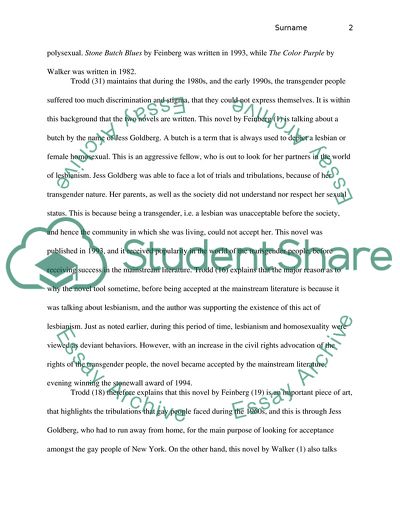Cite this document
(“Concept of Transgender Depicted in ColorPurple, and Stone Butch Blues Admission/Application Essay”, n.d.)
Concept of Transgender Depicted in ColorPurple, and Stone Butch Blues Admission/Application Essay. Retrieved from https://studentshare.org/literature/1653980-final-paper
Concept of Transgender Depicted in ColorPurple, and Stone Butch Blues Admission/Application Essay. Retrieved from https://studentshare.org/literature/1653980-final-paper
(Concept of Transgender Depicted in ColorPurple, and Stone Butch Blues Admission/Application Essay)
Concept of Transgender Depicted in ColorPurple, and Stone Butch Blues Admission/Application Essay. https://studentshare.org/literature/1653980-final-paper.
Concept of Transgender Depicted in ColorPurple, and Stone Butch Blues Admission/Application Essay. https://studentshare.org/literature/1653980-final-paper.
“Concept of Transgender Depicted in ColorPurple, and Stone Butch Blues Admission/Application Essay”, n.d. https://studentshare.org/literature/1653980-final-paper.


